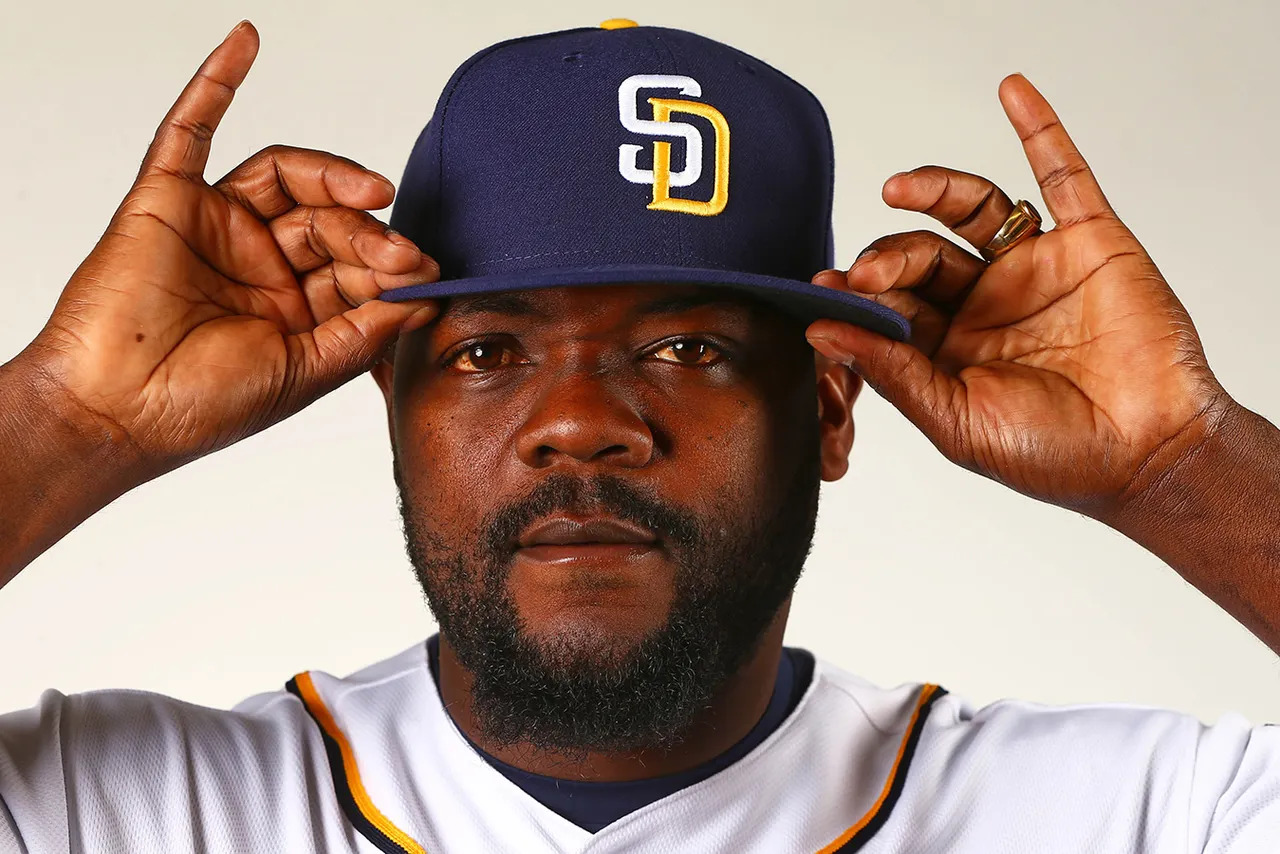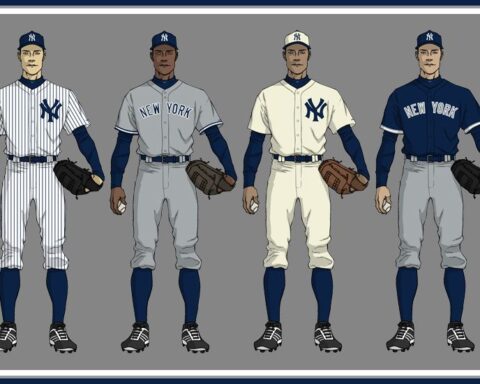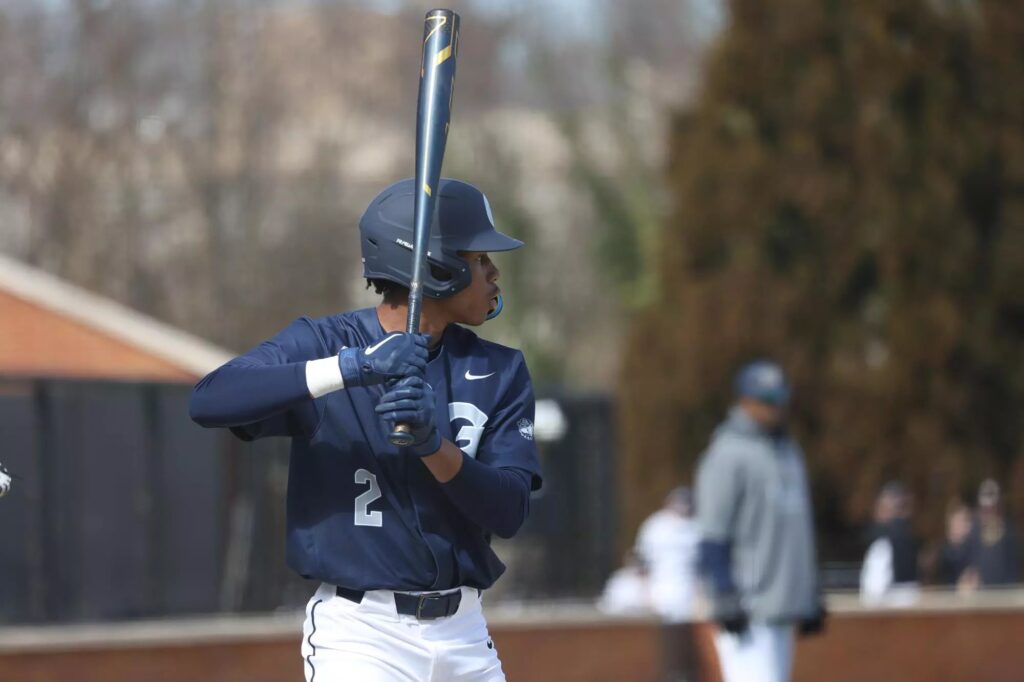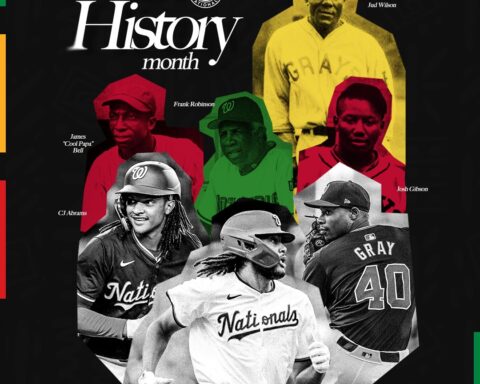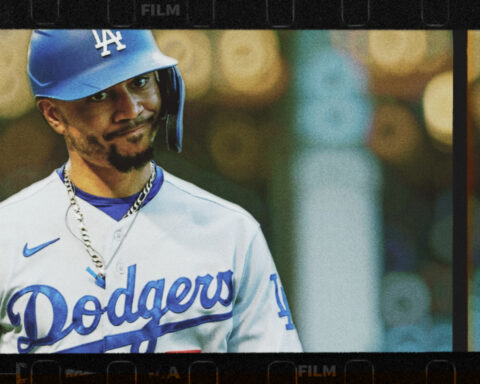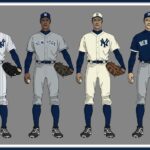Author’s Note
This article is one of the first to be published under the umbrella of my official partnership with Black Baseball Mixtape. At least four articles will be published per month on all topics that are relevant to Black Baseball Culture, including the moments that reveal themselves as the 2025 MLB season transpires. I will have more opportunities to interview Black players, scouts, coaches, etc. than ever before in my brief career.
My main goal is to publish stories that push the envelope and highlight the entire African diaspora’s past, present, and future relationship with baseball on a collective level. Thank you all for reading and subscribing; I would not have reached this point without the collective support from my audience and my peers. – Pat Ellington Jr.
Introduction
There are just three pitchers in Major League Baseball history who have recorded at least one save with nine different teams. Additionally, there are only 53 pitchers who have successfully converted at least 200 saves, and among them, only 31 have reached the milestone of 300 saves. Since the start of the Wild Card Era in 1995, only 10 relievers have pitched at least 900 total career innings. The only individual to achieve these milestones is Fernando Rodney, who boasts one of the most unique careers of any relief pitcher during The Integration Era.
Rodney belongs to an ethnic enclave known as Samaná-Americans, descendants of a group of African-American families from the Philadelphia, Pennsylvania area who immigrated to the island of Hispaniola during the mid-1820s while it was still entirely under the authority of Haiti after being emancipated from slavery. Most of these individuals congregated on the Samaná Peninsula, located in the northeastern sector of the island in the present-day Dominican Republic.
During the late 1700s and early 1800s, the American government established multiple deportation programs to send emancipated individuals of African descent in the United States to the Caribbean, Latin America, and Africa. The Samaná-American ethnic group makes up the largest English-speaking population on the island of Hispaniola, and it is one of the five largest ethnic enclaves of Anglophone Black people in Latin America. Its creole/patois is a mixture of Spanish and Ebonics known as Samaná English. There are approximately 10,000 Samaná English speakers and half a million total Samaná-Americans in the Dominican Republic currently.
Rodney was selected to three All-Star teams and recorded seven seasons with at least 30 saves. He reached the forty-save plateau twice and is 19th all-time in career saves with 327. His 951 appearances on the mound is the 20th all-time, and he is one of 47 relief pitchers with at least 900 career strikeouts. Rodney was the last MLB player born in the 1970s to appear in a game, which encapsulates his persistence.
Rodney is known for sporting a baseball cap with the bill pointed slightly towards the left and his tradition of firing off an imaginary bow and arrow after successfully closing out a game. He tilts his cap as a way to pay homage to his late father, who succumbed to cancer a week before his MLB debut. The bow and arrow gesture is a reference to the place where he was raised, a small village in the Samaná Bay known as “La Flecha.”
As a child, he learned the tricks and trade of a Dominican fisherman under the tutelage of his father, Ulises Benjamin, with whom he had a close relationship. The younger Rodney developed the trademark jokester personality that has made him beloved in every clubhouse he’s gotten dressed in while handling nets and lines on the sea with his father. Growing up, his preferred sport was boxing, even though he always showed promise as a baseball player.
“That’s what all the guys do (at that age in Santo Domingo) — boxing, karate, taekwondo. But my dad told me, ‘I don’t like boxing for you. I don’t like that sport. Keep working on practicing baseball.’ And I listened to my dad.” – Fernando Rodney
The Long Journey to Motown
On November 1st, 1997, Rodney finally signed with the Detroit Tigers organization when he was 20 in exchange for a $3,000 dollar signing bonus. The average Dominican player signs their first professional contract around 16-17 years old, so Rodney was a few years behind his peers. An outfielder who was converted into a pitcher upon becoming a professional, he spent the first two years of his career on the backfields of the Detroit Tigers spring training facility in Florida, learning how to pitch. His MiLB debut arrived in 1999 at 22 years old, and he reached the majors three seasons later.
Rodney made his MLB debut on May 4th, 2002, against the Minnesota Twins. He would make three more appearances before returning to the minors until mid-July. In 20 total appearances with Detroit during the 2002 season, he put up a 6.00 ERA in 18 innings with 10 strikeouts, 10 walks, and 25 hits allowed. During the 2003 season, he posted a 1.33 ERA across 40.2 innings with Detroit’s Triple-A affiliate. In 29.2 innings across 27 appearances with Detroit in 2003, he put up a 6.07 REA with a 1-3 win/loss record. Despite having such an inflated ERA, he showed positive peripherals with a 3.50 FIP. He recorded his first save in MLB during the 2003 season, finishing the year with three.
He underwent Tommy John Surgery after the 2003 season and was forced to miss all of the 2004 MLB season, focusing on his recovery. At this point in his career, Rodney was a 27-year-old converted reliever with a career ERA above six in almost 50 innings of work. He had just suffered an injury that many pitchers never fully recover from. The Tigers very easily could have moved on, and Rodney’s arm could have flamed out, but they gave him more time, and he persisted.
2005 was his first season back from injury, logging a 2.86 ERA across a then-career-high 44 innings and nine saves as the team’s most productive closer. He pitched in varying roles in the Detroit bullpen over the next few seasons, logging 238.1 innings with a 4.19 ERA from 2006 to 2009. He saw time as a middle relief option during the 2006 and 2007 seasons before transitioning back to being Detroit’s closer for 2008 and 2009.
Departing From Detroit
After the 2009 season, he opted for free agency instead of going into arbitration with Detroit and staying on the team’s 25-man roster. He had interest from multiple teams who were looking for an arm to shore up their bullpens. Rodney’s seven years as a Detroit Tiger was the longest time he spent with one team during his MLB career.
On Christmas Eve 2009, Rodney signed a 2-year, $11 million deal with the Los Angeles Angels. His tenure with the Angels can be summarized in the strife between both parties that was practically out in the open. He frequently clashed with his manager and the front office about his role in the bullpen. He was slotted in a middle relief role before becoming the closer for the second half of 2010 because of a trade that sent former closer Brian Fuentes to the Minnesota Twins. He logged a 4.24 ERA with 14 successful saves, 21 holds, and seven blown saves across 68 innings of work during the 2010 season. He was limited to 32 innings across 39 appearances for the 2011 season due to a back injury that kept him sidelined for six weeks. He logged a 4.50 ERA with ten holds, three saves, and four blown saves. His time with the team ended unceremoniously, and both parties moved on quickly.
Rodney Reaches His Apex

The early to mid-2010s were undeniably Rodney’s most productive seasons while wearing an MLB uniform. His notable performances during this span signaled a pivotal shift in the league, elevating the importance and effectiveness of relief pitchers. Rodney’s first season with the Tampa Bay Rays in 2012 was not only the best of his career; it was one of the most outstanding individual seasons ever recorded by a relief pitcher in MLB history.
Rodney’s first season with Tampa Bay saw him log an absurd 0.60 ERA across 74.1 innings with 48 saves. He made his first of three All-Star appearances and finished fifth in the AL Cy Young Award voting for 2012. He allowed only 43 total hits out of the 282 total batters he faced, and opposing batters put up a .417 OPS against him. The Samaná-American reliever followed up his career year with another impressive season, posting a 3.38 ERA across 66.2 innings with 37 saves for a Tampa Bay Rays team that made the ALDS via the AL Wild Card.
Rodney agreed to a two-year contract with the Seattle Mariners and continued to dominate. He posted a 2.85 ERA with an MLB-leading/career-high 48 saves across 66.1 innings, his third consecutive season with at least 35 saves. He made his second appearance on the MLB All-Star Game roster for the American League as well. His career took a miserable turn in 2015, posting a 5.68 ERA with the Mariners before being traded to the Chicago Cubs and logging a 0.75 ERA for the rest of the season. This was the first of four times Rodney would be traded in a five season span.
The Years of Turbulence
The back end of Fernando Rodney’s career saw him bouncing from team to team, yo-yoing between effectiveness and failure as his career approached its conclusion. In 2016, he made his third and final All-Star team roster with the San Diego Padres before being traded to the Miami Marlins. He posted a microscopic 0.31 ERA with San Diego before putting up a grotesque 5.89 ERA after being traded to Miami. In 2017, he posted 37 saves for the Arizona Diamondbacks and pitched to the tune of a 4.23 ERA and 3.03 FIP. In 2018, he posted a 3.09 ERA across 43.2 innings for the Minnesota Twins before being traded to the Oakland Athletics as an addition for the postseason.
Going Out On Top
2019 was Rodney’s final season wearing an MLB uniform in his long and unlikely career. He struggled with poor performance during the first half of the season, logging only 14 innings with the Oakland A’s and an ERA above nine before being designated for assignment on May 25th. He was then signed by the Washington Nationals on June 4th because of a depleted and ineffective bullpen, and he helped them tread water. He logged a 4.05 ERA across 33.1 innings in Washington D.C. after posting a 9,42 ERA during his stint with Oakland earlier in the year.
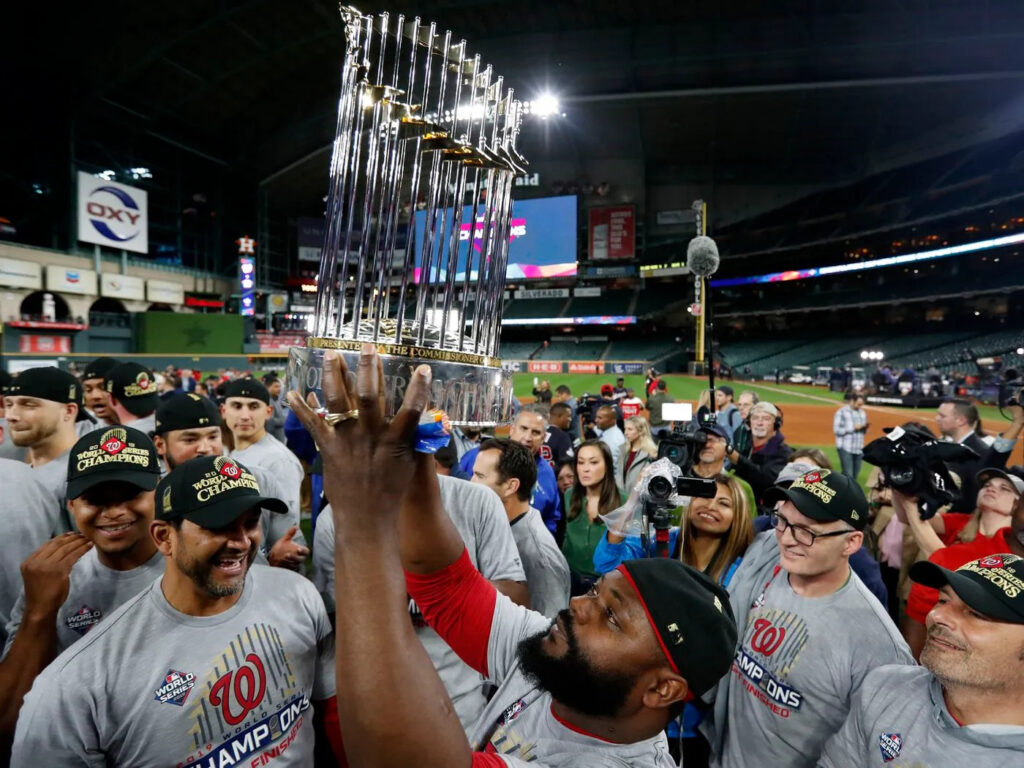
The 93-win 2019 Washington Nationals is one of the greatest second-place teams in the history of MLB’s Divisional Era. They won nine of their last ten games and seven straight to make the NL Wild Card game. They beat the Brewers in the NL Wild Card Game and then defeated the Los Angeles Dodgers in a grueling, five-game NLDS series. They then swept the Cardinals in the NLCS before defeating the Houston Astros in a classic, seven-game World Series.
Dominican Winter League & International Career
After retiring from the MLB in 2019, Rodney transitioned to playing in the Mexican League during the summer months and playing in the Dominican Winter League for the other half of the year. His first appearance in the Dominican Winter League happened during the 2008-2009 season while he was still an active MLB player and his final appearance was during the 2023-2024 season.
Fernando Rodney was also a fixture in the World Baseball Classic’s early tournaments for the Dominican Republic. He famously joined the Dominican Republic’s WBC roster in 2013 without getting permission from the Tampa Bay Rays front office. He then went on the greatest run by a closer in WBC history, securing six saves without giving up a single run for a Dominican team that went 7-0 and won the World Baseball Classic for the first time.
Conclusion
As one of baseball’s most colorful personalities, Fernando Rodney’s winding path truly encapsulates the beauty and diversity of the game. His unique background is also why I write about the entire African diaspora’s relationship with baseball instead of only focusing on African-American baseball culture. While he has had many stories written about his vibrant personality and unique career, his identity as a Samaná-American has practically been ignored. As much as I wondered how someone from the Dominican Republic could have the last name Rodney before doing the research that led me to write this article, there have to be others within the various realms of baseball who have similar questions.
He turned a $3,000 signing bonus into almost $50 million in MLB career earnings with his right arm and an indomitable will. In addition to his 17-year MLB career, he has been a constant presence in the Dominican Winter League, the Mexican League, and the World Baseball Classic. When Rodney’s professional career started in 1997, there probably wasn’t a single individual on this floating space rock called Earth who thought he would pitch for over twenty years professionally besides his father and himself, yet here we are.
Recommend The Red Black Green Baseball Blog to your readers

